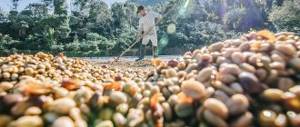Landing
The coffee bean is the seed for planting the coffee tree. Dried, roasted and ground, it is used to brew coffee. Unprocessed grain can be used for planting.
Coffee beans are planted in large tanks and left in dark rooms. The sprouts are watered regularly and kept away from sunlight. When they become strong enough, they are transplanted to plantations. This is usually done during the rainy season so that there is enough moisture in the soil to support the roots.
Harvesting
It will take three to four years for the tree to begin bearing fruit. Unripe coffee berries are green in color. Depending on the variety, they turn bright or dark red when ripe and ready for harvest. They ripen faster in low mountainous areas and at high temperatures. Usually the crop is harvested once a year. In countries where flowering occurs twice a year, such as Colombia and Kenya, coffee is harvested twice a year.
Coffees harvested early or late in the season have a weak flavor, while mid-season coffees harvest bold flavor profiles. For this reason, the best roasters purchase their coffee mid-season.
In most countries, manual labor is used to ensure the ripeness of the berries. The fruits ripen at different times and it may take up to three pickings to fully harvest the entire crop. In countries with relatively flat landscapes, such as Brazil, this process takes place using machinery, which certainly makes the job easier.
Harvesting is done in one of two ways:
- Stripping - all the berries are removed from the branch at the same time by hand or using equipment.
- Picking - only ripe berries are removed and only by hand. Farmers walk around the trees every 8-10 days, choosing only the ripest berries. Due to the fact that this method is labor-intensive and more expensive than stripping, it is used primarily for collecting high-quality Arabica beans.
A good harvester will collect 45-90 kilograms of coffee cherries per day, which can then be used to produce only 10-20 kilograms of coffee! The number of berries collected by each picker per day is weighed, and labor is paid based on the results.
Coffee production technology
The process of producing real coffee also includes several important steps. To get a high-quality natural product, you need to collect the berries, process them and fry them. Only after this the goods can be sent for sale.
Timing and method of harvesting
The timing of coffee harvesting varies significantly in different parts of the world. On Brazilian plantations this is the period from April to September. In Costa Rica, harvesting takes place from September to early January. The time to pick coffee berries in Ethiopia is from October to December.
Technology also depends on the region. Manual picking, in which only ripe fruits are selected and green beans are left to ripen on the coffee tree, is rarely used. This is due to the fact that the process is very labor-intensive and takes a long time.
Most often, collectors use the “stripping” method. At the same time, not a single fruit is left on the tree. All collected berries are sent to the processing station. There they are sorted by degree of maturity.
The crop is also harvested mechanically. In this case, specialized combines are used. The use of this method is not always possible. Plantations are often located on fairly steep mountain slopes. It is very difficult for agricultural vehicles to get through there. This method is most often used in Brazil.
Coffee bean processing
The process of making coffee involves special processing. It can be produced at two types of stations:
- wet mill. The wet method is used
- dry mill The dry method is used.
During dry processing, the berries are dried on the ground or on special concrete or clay platforms. The taste of the fruit is rich, intense, with pronounced sweetness. At the same time, they can acquire a specific taste that not everyone likes. If the grains are dried in soil, they develop an earthy flavor.
The choice of this method is often due to the inability to timely transfer the crop to the wet processing point. The product quality is not the best. To achieve good results, you need to strictly adhere to technology. Ideally, sun drying is carried out in regions where the harvest period coincides with a prolonged drought and the likelihood of precipitation is reduced to zero. Ethiopia, Yemen, Indonesia, and Brazil are famous for such climatic conditions.
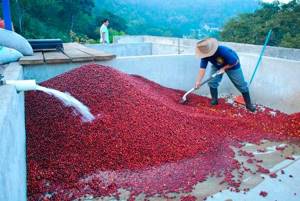
In wet processing, the grains are peeled and placed in water-filled containers. There they are aged until the gluten is completely removed. Inferior fruits with low density immediately float to the surface. They are removed. This is due to the fact that when placed in a frying machine they will turn into coals.
By using special devices, it is also possible to sort unripe berries. Upon completion of processing, the grains are dried in mechanical dryers or in the sun. The fruits acquire a soft, balanced taste.
As a rule, the wet method is used in regions where sour berries grow.
This method is also used in countries where it is not possible to subject grains to prolonged drying in the sun.
Coffee roasting
Upon arrival in the country of consumption, the grains are roasted. This process is performed on special machines (roasters). They come in several varieties:
- gas,
- electrical,
- manual,
- automatic,
- drums,
- convector
Each machine roasts beans differently. The main rule of this process is that the darker the fruits are, the less sourness is felt. At the same time, the richness of taste, strength and bitterness increase.
Roasting is carried out exclusively in the region where coffee is consumed. This is due to the fact that the resulting grains can retain their original taste and aroma for only a couple of weeks. Over the next couple of months, the taste quality is already rated as a four. After another two months, their characteristics are reduced by another point. If more than four months have passed since roasting, the product can be safely thrown away. The fruits acquire a rancid aroma, and this inevitably affects the taste.

Treatment
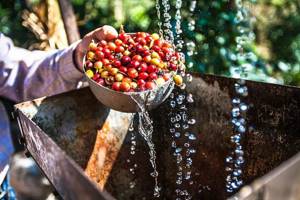
After harvesting, processing must begin as soon as possible to prevent spoilage of the berries. Depending on the country and local resources, coffee is most often processed in one of two ways:
- Drying is an ancient method of coffee processing, often used in countries with limited water resources. Freshly picked berries are placed in the sun. To prevent the berries from spoiling, they are turned over several times during the day, and covered at night and during rain to prevent them from getting wet. This process can continue for several weeks until the water content in the berries is reduced to 11%.
- Washed - begins with removing the pulp from the grain, so it is simply dried in its own shell, the so-called “parchment”. First, the freshly picked berries are sent for processing in special equipment, where the pulp is removed. Next, the grains are grouped by weight, passing through water streams. Light grains go up, and heavy grains go down. So, the grains pass through several of these sorting drums with water, where they are separated by size. After sorting, the grains are placed in large tanks of water. Various factors—bean quality, climate, and altitude—affect how long the grains remain in these tanks. As a rule, they remain there for 12-48 hours, after which the grains pass through water streams again and are sent for drying.
In fact, these are not all processing methods, but only the main ones. You can learn more about all types of processing from our separate article on this topic.
How to make an instant drink
Instant coffee is very popular in the CIS, although it is rarely drunk in Western Europe. How is instant coffee made and how long does the process take? The most popular and widely used method in modern production is freezing or freeze drive. First, the green grains are sorted, then fried to the desired degree and crushed.
The direct production process is divided into several stages:
Ground Arabica coffee
- Ground coffee is loaded into a special apparatus, where it undergoes an extraction stage under the influence of a stream of hot water. In a simplified form, this process is a long brewing process in order to obtain a concentrated drink. Depending on the equipment, the process lasts from 2 to 4 hours.
- Next, some of the moisture is removed from the concentrated extract in special tanks.
- Using freeze drive technology, the extract is loaded into special sublimators, where it is sprayed onto a drum and frozen. The resulting powder can be turned into granular, flavorings and other additives can be added.
Flavoring is done with coffee oil. If you need to get a product with the aroma of caramel, chocolate, etc., use synthetic flavors that are identical to natural ones. The latest innovation is the production of millicano granules, where instant coffee contains ground particles. This drink is more aromatic and tasty.
What is instant coffee made from? These are predominantly Robusta beans. Non-professionals tend to believe that this is a commercial move that allows them to further reduce the cost of production, since Robusta is much cheaper than Arabica. But the truth lies not so much in the price as in the special characteristics of this variety. Robusta is much richer in caffeine content. In addition, it has a pronounced bitterness and better releases its extractive components, that is, taste and aroma, into water.

Instant coffee production workshop
In the process of producing instant coffee, the ground product is boiled for a long time, causing some of the caffeine, flavor and aromatic compounds to be lost. The high concentration of the latter in robusta allows them to be retained in the finished drink. In addition, many perceive coffee as an energy drink, while Robusta contains a lot of tonic alkaloid and most of it remains in the can.
Drying
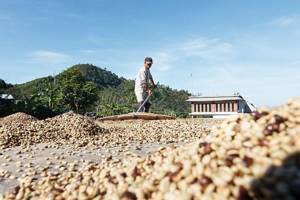
If the beans have been processed using the washed type of processing, they must be dried until the moisture content does not exceed the same 11%. These grains are still covered with parchment. Drying is carried out either on large tables, where they are regularly turned over, or using equipment.
All the dried beans, called unhulled coffee beans, are taken to a warehouse in jute or sisal bags where they will await their turn for export.
Cleaning

Before sending grains for export, producers carry out final processing of the grains. It takes place in three stages:
- Removing parchment. The parchment is removed from washed grains, since everything else was removed during the processing stage. Dry processed grains are cleared of all dried pulp.
- Polishing. An optional process by which all remaining fine particles are removed from the grain. While polished grains are considered better than unpolished grains, in reality there is little difference between the two.
- Grading and sorting. Occurs based on size and weight. Grains are also graded for the presence of imperfections in color. To determine the size of the grains, they are passed through several measuring instruments. They are also sorted in special equipment with high pressure to separate heavy grains from light ones. Defective grains are selected manually or automatically. Those that do not meet quality criteria (unacceptable size or color, presence of insects inside, excessive fermentation) are discarded. In many countries, both manual labor and equipment are used for this sorting to ensure high quality grains.
Why is coffee harvested by hand?
Harvesting coffee is a very labor-intensive process that requires careful and patient approach. Even one spoiled berry can destroy the entire harvest. In Central America, Ethiopia, Kenya and India, coffee is harvested by hand. It is advisable because grains on the same tree ripen at different times. When some berries are ready for picking, others remain unripe. It is believed that thanks to this method it is possible to obtain the highest quality raw materials and, accordingly, an impeccable drink.
Sometimes they resort to complete manual collection when deadlines are running out before the start of the rainy season. For example, in some countries special combs are used. First, burlap is spread under the trees, where the berries are “combed.” Then the fruits are further sorted, sorting out the unripe ones. The mechanized method of collecting coffee has become widespread in Brazil.
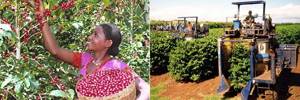
Cupping
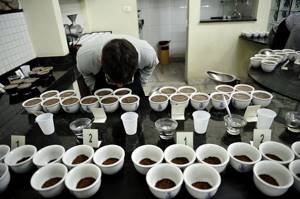
Cupping - quality and taste testing - is carried out several times in a room specially equipped for this.
First, the cupper evaluates the grains by appearance. Then the grains are roasted in a small laboratory roaster, immediately ground and poured with hot water at a strictly regulated temperature. The first thing a cupper begins to evaluate a drink with is the aroma.
Next, the cupper tastes the coffee in small portions, while trying to cover all taste buds.
Coffee is analyzed not only to determine characteristics and shortcomings, but also to create balanced blends and select the desired type of roast. Experienced cuppers can taste hundreds of different varieties a day and still feel the subtle differences between them.
Roasting
Roasting turns green beans into the aromatic chocolate-colored beans that we are used to seeing in stores and coffee shops. Most roasters roast coffee at around 287°C. All this time, the roaster blades constantly mix the grains so that they do not ignite.
When the internal temperature of the beans reaches approximately 205°C, they turn brown and secrete kafeol, an oil contained in the beans themselves. The process is called "pyrolysis"; This is a kind of “heart” of roasting - it reveals the aroma and taste of the coffee we drink.
After roasting, the beans are immediately cooled with air or water. Roasting is usually performed by the importing country because freshly roasted beans need to reach consumers as quickly as possible.
There are 3 basic coffee roasts: light, medium and dark. Light and medium roasts best retain the true flavor of the beans, while dark roasts are bitter and contain the least caffeine.
Industrial processing
Drying
There are 4 drying methods.
On concrete or clay patios: this method is common in Central America. Such patios are built on flat terrain with access roads. They can accommodate a significant amount of grains.
On raised beds, which are made of wooden frames with a mesh stretched over them. This drying method was first used in Africa. Therefore, such devices are called “African beds”. The advantage is that the grains are dried evenly.
Interesting! Calorie content of coffee with milk, sugar and other additives for different volumes
On parabolic beds, which are used in regions with poor conditions for high-quality drying. For example, in Colombia. The design is similar to greenhouses with a semicircular frame.
Mechanical dryers with a drum design: used on large farms. Allows you to reduce drying time by 2-4 times. When the drum rotates, warm air is pumped in, which dries the grains.
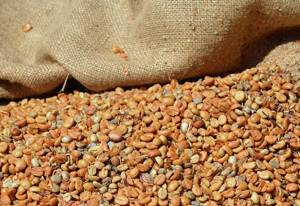
Peeling, sorting and packing into bags
After drying, the grains are given time to rest. They are placed in bags and left in warehouses for 6-8 months.
After resting, the grains are subjected to peeling (hulling) - the parchment shell is removed.
Clean, shell-free green coffee beans are sorted and packed into bags of 60 kg each. They are shipped to companies that specialize in roasting.
Light and medium roast
After heat treatment, coffee beans increase in volume, change color and acquire specific taste qualities. There are three types of roasting: light (light), medium and dark.
Light roasting is used for Arabica varieties grown in the highlands. The drink made from such grains acquires a sour and somewhat watery taste.
Medium roast is popular in America. The grains are fried intensively and for a long time, but so that there are no oil stains. They become dark, and the drink takes on a bitter taste.
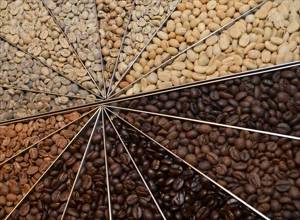
Dark roast
The Vienna method is popular in Central America. When roasted this way, dark brown oil marks appear on the beans.
Intensive French roasting imparts shine, a dark brown color, and a bitter taste to the beans.
After the continental method or “double roasting” the beans get the color of dark chocolate.
The Italian method is accompanied by high temperature. The grains become oily black.
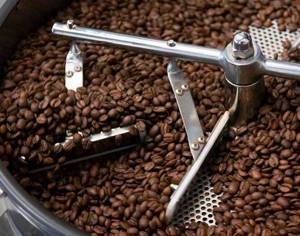
Grinding
Natural coffee and drinks based on it are prepared from ground beans. Grinding is divided into three types: coarse, medium and fine. During industrial grinding, it is additionally passed through a sieve.
The type of grinding affects the aroma and taste of the drink. The finer the grind, the faster the coffee dissolves. Cooking time, depending on the type of grinding, ranges from 1 to 8 minutes.
Ground coffee is pressed and packaged in special bags. To prevent it from deteriorating, air is removed from the bags or inert gas is pumped in. Coffee can be stored in this packaging for up to 2 years. The opened package must be placed in an airtight container.

Preparation

The preparation method affects the taste of the coffee in the cup, so at True Coffee we always list recommended preparation methods for our varieties. What types of brewing are there?
- Pressure brewing (espresso machine, moka, aeropress)
- Soaking (French press, siphon)
- Filter coffee or drip method (Chemex, Hario, Cold Brew)
You can learn more about brewing coffee in our article on coffee drinks and in our brewing guide.
When we started writing this article, we never thought that we would discover so many nuances that need to be described and that we take for granted. This helped us analyze the coffee journey from start to finish and establish a clearer picture of the industry as a whole. We hope that the article was also useful to you and that you learned something new and interesting.
Historical reference
Origin
The history of coffee is overgrown with legends. One of them says that Ethiopia is considered the birthplace of the coffee tree. And it was opened by the Yemeni sheikh ABD al-Qadir.
Another legend claims that the discoverer was the shepherd Kaldima. He noticed that the goats had eaten the leaves of a wild coffee tree and were beginning to act agitated.
The global recognition of coffee beans began in Yemen. Cultivation of wild plants began in the 13th century. Yemen remained a coffee supplier for 200 years.
Coffee appeared in Europe and North America in the 17th century.
Find out more in the article “What is coffee: the history and homeland of the aromatic drink.”
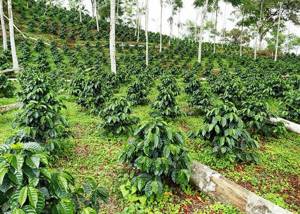
Varieties
There are 50 varieties of coffee drinks in the world, which can be made from two varieties: Arabica and Robusta.
Arabica grows at elevations up to 2500 m. The homeland of this variety is Africa. The grains are green or purple in color. Trees grow up to 5 m.
Robusta is native to South America. The height of the trees is from 2 to 10 m. Instant coffee is made from these varieties.
Read more in the article “What is Robusta and how is it different from Arabica?”
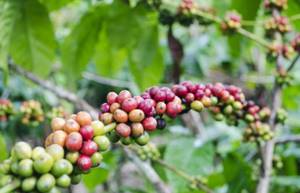
Producing countries
Coffee producers and exporters in the world include: Brazil (30%), Vietnam (17%), Colombia (12%), Ethiopia (6%), Indonesia (5%), India (4%).
Coffee is also grown in:
- South America - Peru, Venezuela, Ecuador, Bolivia, Paraguay;
- Central America - Honduras, Mexico, Guatemala, Nicaragua, Costa Rica, Cuba;
- Asia - Thailand, Laos, Philippines;
- Africa - Cameroon, Uganda, Madagascar, Angola.
Interesting! Can mothers drink coffee while breastfeeding?
For a complete list, see the article “Where Coffee Really Grows.”
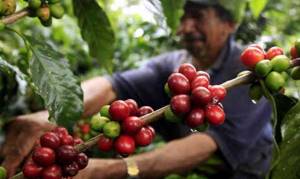
Try our coffee
Mix of grains
Espresso coffee
Blend of 100% Arabica beans. The aroma reveals notes of roasted peanuts and hazelnuts, while the taste is dominated by dark chocolate and walnuts. Soft aftertaste of cocoa and burnt sugar.
Peru
Coffee "Chanchamayo"
Rich and strong coffee with notes of bread in the aroma.
Brazil
Coffee "Santos"
The aroma is dominated by spices and cocoa. The soft nutty-chocolate taste is offset by a slight sourness at the end.
